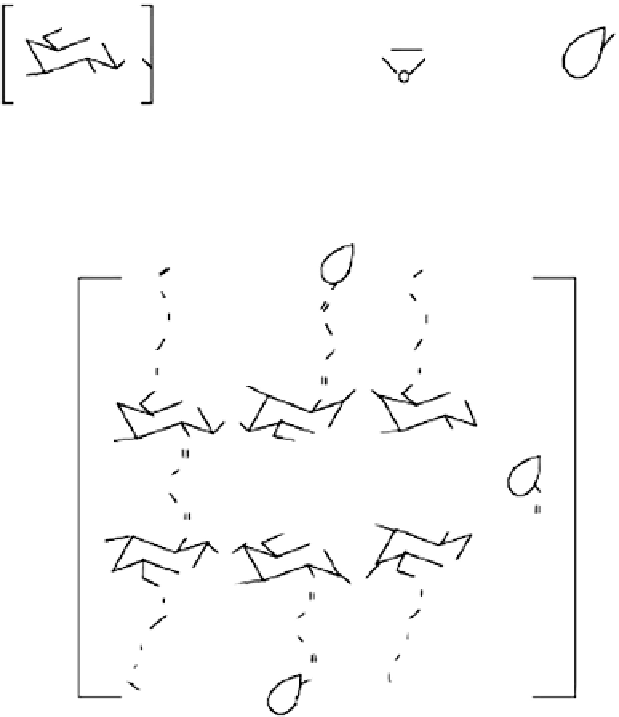Biomedical Engineering Reference
In-Depth Information
OH
NH
2
O
+
HOC(CH
2
)
3
COH
+
H
2
C
CHCH
2
Cl
+
O
enz
NH
2
OH
n
(a) Chitosan (CTS)
(b) Glutaraldehyde
(c) Epichlorohydrin
(d) Enzyme
CTS
CTS
enz
O
O
N
CH
2
CH
2
CH
HCOH
HCOH
(CH
2
)
3
CH
2
CH
2
CH
OH
O
O
O
O
N
O
O
O
NHCOCH
3
OH
N
OH
OH
CH
enz
(CH
2
)
3
N
CH
N
OH
NHC(CH
2
)
3
CH
OH
OH
O
O
O
O
O
O
OH
N
O
CH
2
CH
2
CH
(CH
2
)
3
HCOH
HCOH
CH
CH
2
CH
2
O
N
O
CTS
CTS
enz
n
(e)
Figure 8.5
Reaction between chitosan, ECO, GA, and peroxidase enzyme. (From de Oliveira, I. R. W. Z., Fernandes, S. C.,
and Vieira, I. C. 2006.
J Pharm Biome Anal
41: 366-372. With permission.)
affinity adsorbents provide moderate affinity to macromolecules by covalently coupling
chelating compounds on solid supports to entrap metal ions. Chitosan has been described
as a suitable biopolymer for the collection of metal ions since the amino groups and
hydroxyl groups on the chitosan chain can act as chelation sites for metal ions.
Çetinus et al. first prepared Cu
2+
-adsorbed GA-pretreated cross-linked chitosan beads
(Cu-Ch) and then performed CAT immobilization onto this matrix. The immobilized pro-
tein amount and the maximum reaction velocity for Cu-Ch-CAT were higher than that for
Ch-CAT. In both immobilization situations, although activities of immobilized CAT were
lower than that of free CAT, Cu-Ch-CAT showed a high temperature stability, operational
stability, and storage stability. In addition, these copper-adsorbed chitosan beads can be
used as chromatographic column resin for protein purification in IMAC [50].
8.3.4.3.2 Dye Affinity Support
Dye-ligands have been considered as one of the important alternatives to natural counter-
parts for specific affinity chromatography. They are commercially available, inexpensive,


Search WWH ::

Custom Search